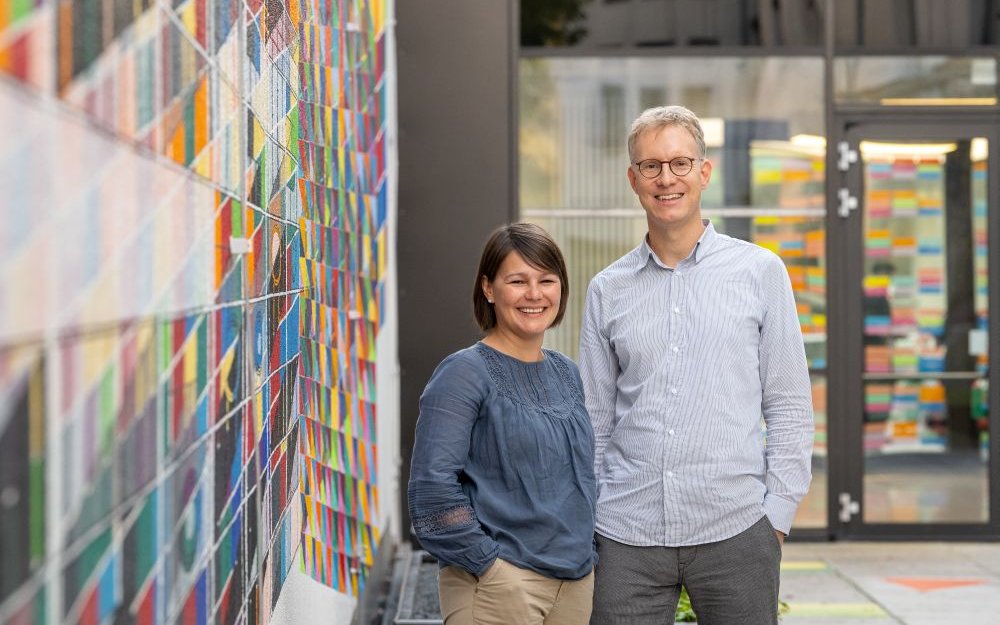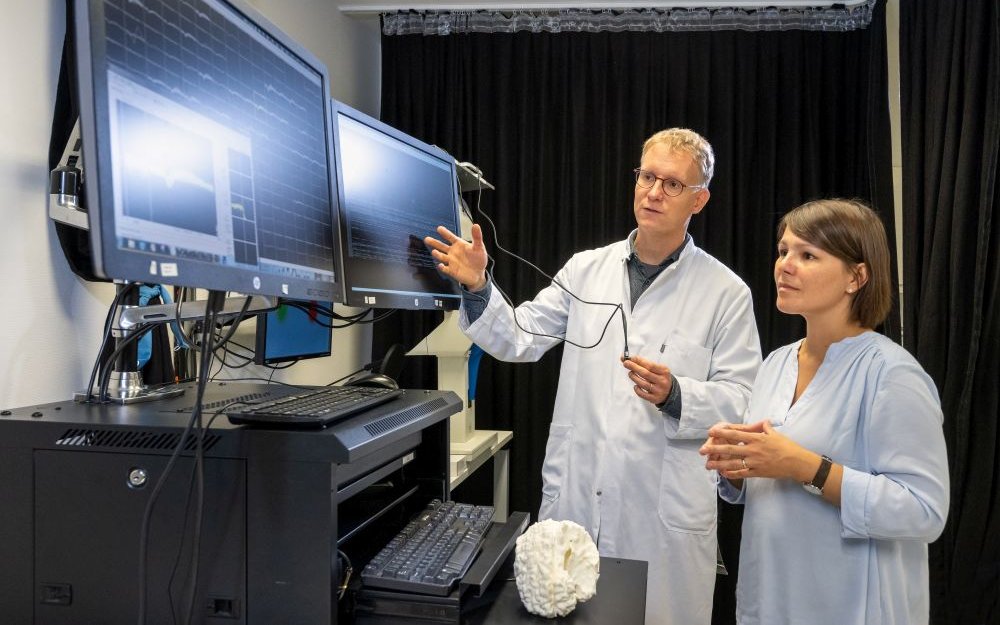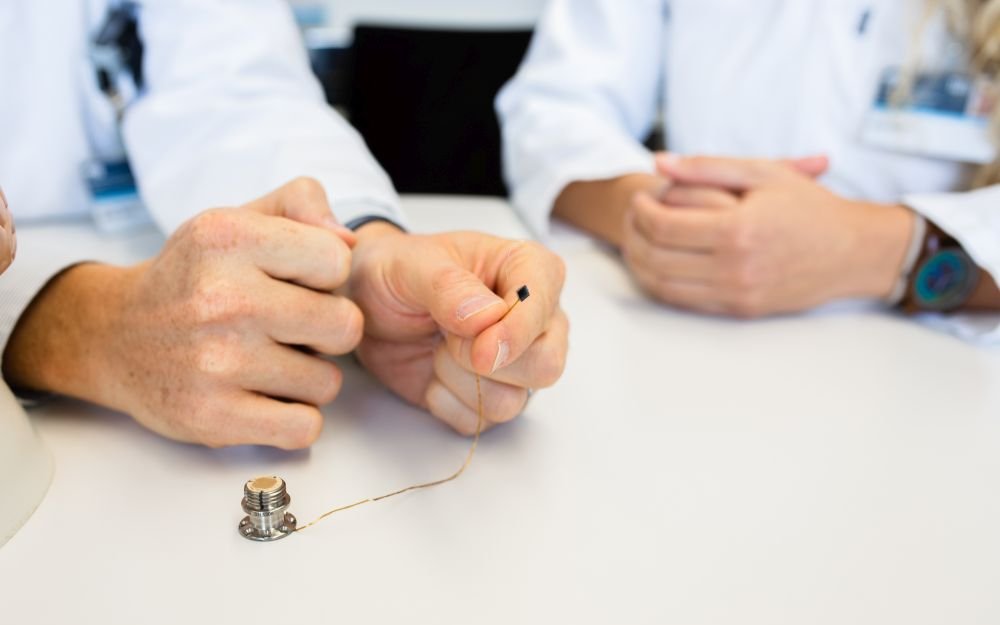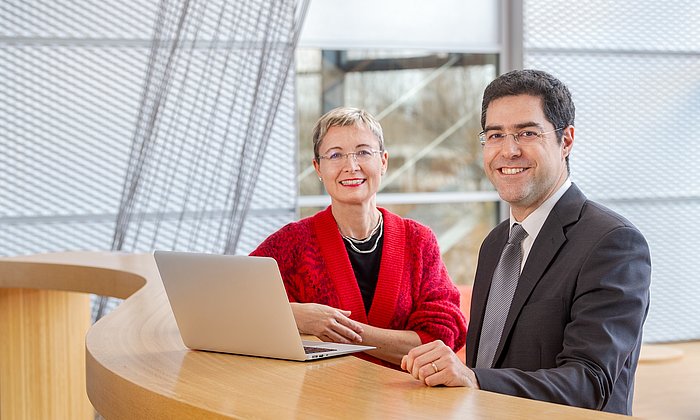New computational models for cognitive disorders and pain
Using Big Data against mental disorders

The clinicians and scientists of the Innovation Network “Neurotechnology in Mental Health – NEUROTECH” are in uncharted waters. “In many medical fields, technological progress has brought many benefits to patients, but this is not as much the case in the neurosciences. That’s why it’s our challenge,” says Simon Jacob, professor for Translational Neurotechnology and coordinator of the research network. With the help of new technology and state-of-the-art computational analysis, modeling and AI, the network aims to find activity patterns in the brain linked to cognitive mental disorders among others. These results should then help to improve the treatment options available to stroke patients with cognitive loss or people suffering from depression or chronic pain.
One Problem Unites Many Disciplines
The researchers have created a unique interdisciplinary scientific setting that covers multiple aspects of the problem. This is characteristic of the new TUM Innovation Networks. They bring together transdisciplinary teams to unleash their collective creativity and scientific expertise to form high-potential innovation fields at the interface of traditional disciplines. One important point of “NEUROTECH” was to bring clinicians with expertise in psychiatry and neurology together with data scientists, computational modeling experts and engineers. “We know the problems and needs of working with patients and therefore can develop methods that fit in with the daily routines of clinics,” Jacob says. Moreover, cognitive neuroscientists and specialists in the fields of ethics and research policy are active members of the team.
Brain Implants to Understand Cognitive Mechanisms
Jacob and his team are using brain implants to dive deeply into the development and perturbation of cognition in neural networks. Because language is a central human cognitive function and often heavily impacted by stroke injuries, the team has chosen to start with this topic. The implants consist of small sensors that are inserted into special regions of the brain of stroke patients who have problems producing and understanding language. These implants are able to precisely record the activity of populations of individual neurons while the patient is solving defined linguistic tasks. The international team, which brings together young people from Italy, France, Turkey, India and China, has already achieved a major clinical milestone: the first implantation was successful, and the device is collecting high quality data.
Big Data and AI
But what kind of information is hidden in these huge amounts of data? The Macedonian scientist Julijana Gjorgijeva, professor of Computational Neurosciences, is the computational modeling expert in the team. She came to TUM in 2016 with the MaxPlanck@TUM career program and is now an associate professor. One of her tasks is to find patterns in the neuronal recordings that correlate with language (dis)abilities. Based on this, she can build models for larger neural networks as well as for other cognitive functions.
Gjorgjieva and her team use the framework of “recurrent neural networks.” These computational models can simulate the behavior of real neurons and the connections between them as they form the networks. “They enable us to modify and switch on or off the connections in the network models like with the brain injuries of stroke patients,” she says. By training these models on the recorded neuronal data and the patients' cognitive behavior, they can formulate more comprehensive concepts of what a healthy or injured brain is doing.

Searching for Biomarkers of Chronic Pain and Depression
In other network projects, brain data is collected using Electroencephalography (EEG). In EEG, patients wear a cap with electrodes that measure neural activities at the skin surface. This method cannot resolve individual neurons, but it has the advantage of providing very good spatial coverage of the brain.
The research team has already collected EEG-data of hundreds of patients who suffer from chronic pain. With the help of machine learning methods and other AI approaches they are now trying to find characteristic brain patterns for pain that can be used as biomarkers to improve diagnosis and predict therapeutic responses. These results and techniques will be transferred to patients with depression in the next steps. Mental disorders are an increasing global burden and the NEUROTECH team has accepted the challenge of developing cutting-edge neurotechnological tools to help these patients.
The article was already published on the website "Research in Bavaria" of the Bavarian State Ministry of Science and Arts:
https://www.research-in-bavaria.de/neurosciences/neurotech-for-mental-disorder
Technical University of Munich
Corporate Communications Center
- Dr. Vera Spaett
- vera.spaett@tum.de
- presse@tum.de
- Teamwebsite
Contacts to this article:
Prof. Simon Jacob
Technical University of Munich
Professor of Translational Neurotechnology
simon.jacob@tum.de
Prof. Julijana Gjorgijeva
Technical University of Munich
Professor of Computational Neuroscience
gjorgijeva@tum.de


